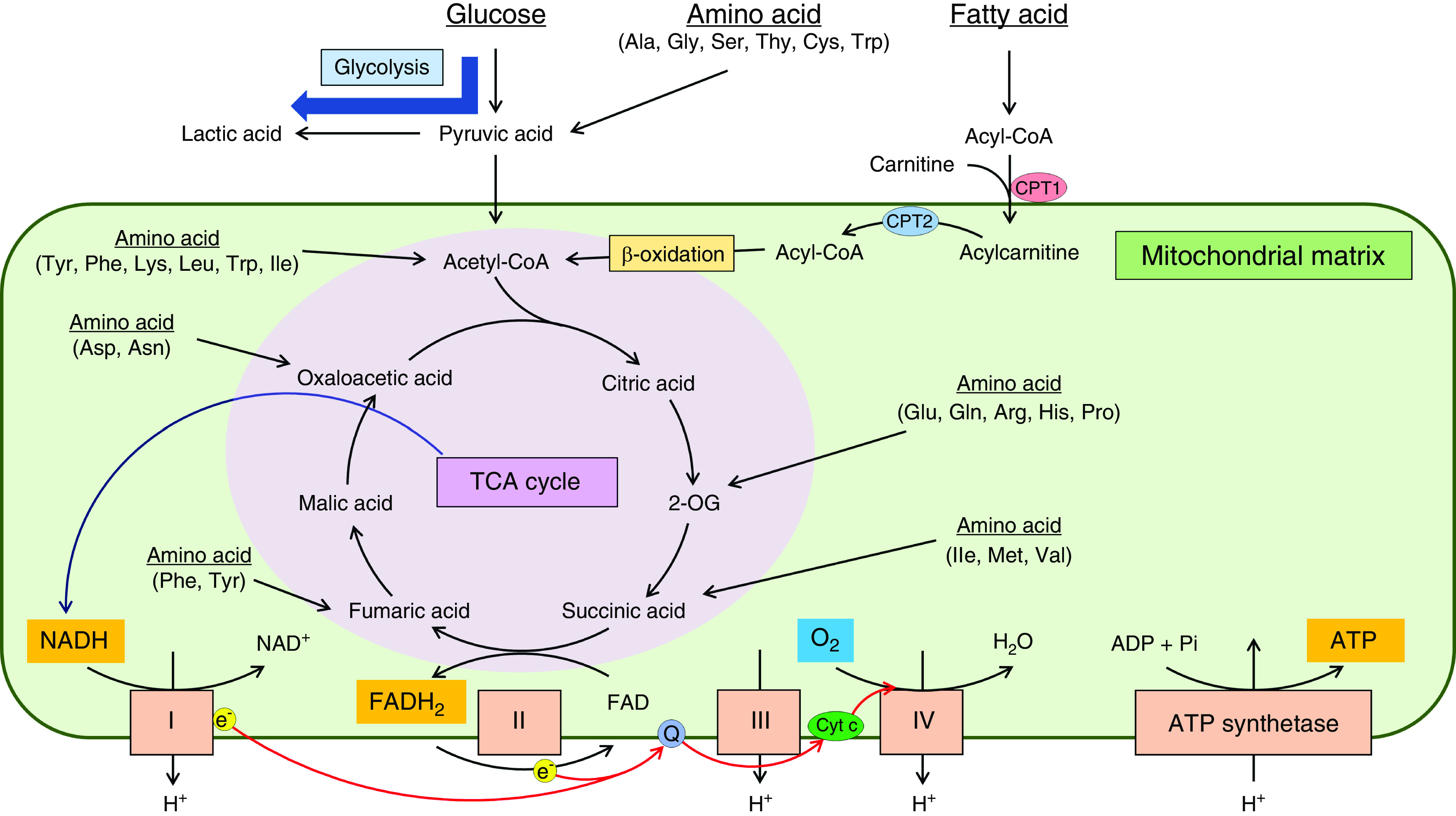Figure 1.

Mitochondria produce energy through oxidative phosphorylation to fuel cellular activity. Glucose, amino acids, and fatty acids enter the tricarboxylic acid (TCA) cycle, which supplies the electron transport chain with the reduced form of NAD (NADH) and the reduced form of flavin adenine dinucleotide (FADH2). The electron transport chain is a series of electron transporters (complex I–IV) in the inner mitochondrial membrane and forms the proton gradient by shuttling electrons from NADH and FADH2 to molecular oxygen (O2) via ubiquinone (Q) and cytochrome c (Cyt c) (the flow of electrons is indicated by red arrows). ATP synthetase produces energy by using the proton gradient between the mitochondrial matrix and intermembrane space. 2-OG, 2-oxoglutarate; Ala, alanine; Arg, arginine; Asn, asparagine; Asp, aspartic acid; CPT1, carnitine palmitoyltransferase I; CPT2, carnitine palmitoyltransferase II; Cys, cysteine; e−, electron; FAD, flavin adenine dinucleotide; Gln, glutamine; Glu, glutamic acid; Gly, glycine; H+, proton; His, histidine; H2O, water; Ile, isoleucine; Leu, leucine; Lys, lysine; Met, methionine; NAD+, oxidized form of NAD; Phe, phenylalanine; Pi, inorganic phosphate; Pro, proline; Ser, serine; Thy, threonine; Trp, tryptophan; Tyr, tyrosine; Val, valine.
